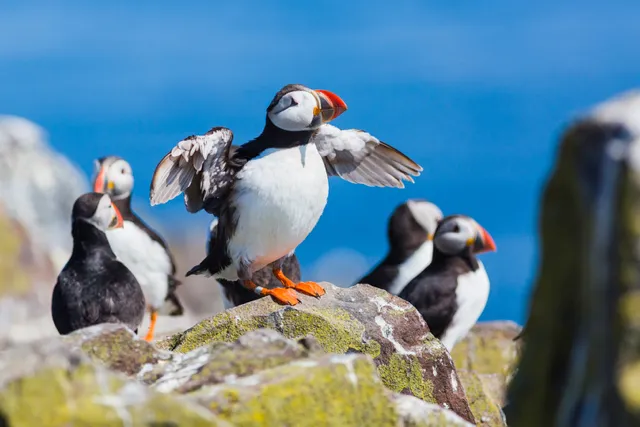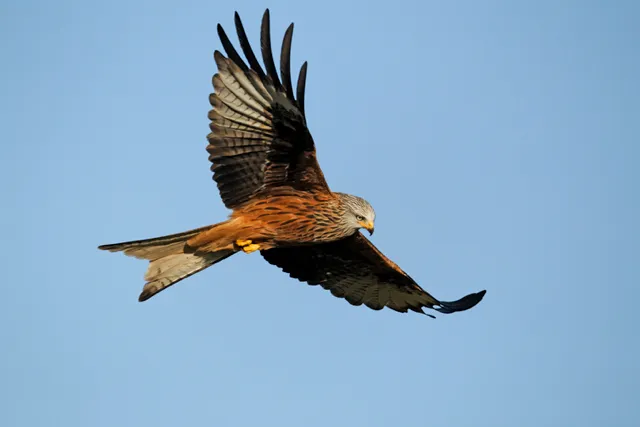
Lundy Island, Bristol channel
What to look out for: Sika Deer and Manx Shearwaters
Dubbed as “Britain’s own Galapagos”, Lundy Island is positioned between the Bristol Channel and Atlantic Ocean, which creates a unique variety of environmental conditions that has given rise to numerous species. Alongside puffins and seals, interesting land animals can also be found, such as the Sika Deer, Soay sheep and feral goats. Keep an eye out for the elusive Manx Shearwater seabird, which occasionally will glide across the shore.
Cairngorms, Scotland
What to look out for: Capercaillie and Scottish Wildcat

The Cairngorm nature reserve is the largest national park in the UK, and incorporates the Cairngorm mountain range in the eastern Highlands of Scotland. There are a range of habitats offered by this park, such as ancient woodland, mountainous areas, moorlands and rivers, meaning you will never be far from spotting some wildlife.
River Cam, Cambridge
What to look out for: Bats
Cambridge is famous for its romantic punting tours of the city, with views of the historic university grounds and old bridges. However one company, Scudamore’s, has started doing “Bat Safari Punting” for visitors over the summer months. While cruising down the River Cam at dusk, hand held bat detectors convert the bat’s sonar into recognisable audio sounds. Wildlife Trust experts lead the tours, to give you the most informed and enjoyable trip possible.
Shetland Islands, Scotland
What to look out for: Otters and Orcas

With three nature reserves, the Shetland Islands have a wide variety of flora and fauna, and represent the true potential of British wildlife. If you are lucky you will be able to spot an orca when they hunt seals closer to the shore – a truly unique experience.
Falmouth, Cornwall
What to look out for: Dolphins
Pendennis Point is a particularly good spot to look out for marine animals. Seals, dolphins and occasionally basking sharks can be seen from the shore. However, make sure you pack a pair of binoculars to make sure you get the best view.
Elan Valley, Powys, Wales
What to look out for: Red Kite

Elan Valley is known for sighting birds of prey, and Red Kites and Buzzards are most likely to be seen. You may also spot a diverse array of birds such as the Merlin, Lesser Spotted Woodpecker, Crossbill and Siskin. Gigrin farm, located near Elan Valley, has been made famous due to their feeding of wild Red Kites every day at 2pm. You can observe the spectacle of large numbers of birds flocking from the feeding hides.
West Cork, Ireland
What to look out for: Minke whales and Fin whales
Minke whales appear off the western coast of Ireland from March, and remain there until after summer. Fin whales appear a little later on in the year, but you will still be able to see them into the summer months, as they should arrive in late August. There are a few companies that offer boat trips to see these sights close up, and although you are not guaranteed to see whales, you are likely to see a dolphin or porpoise during your trip.
Strumpshaw Fen, Norfolk
What to look out for: Kingfishers

Made up of broads and marshes, this important environment is home to a huge range of birds and is even owned by RSPB. Walk around the reed beds to see marsh harriers, bitterns or kingfishers. Recently swallowtail butterflies have been sighted frequently, so visit Strumpshaw Fen on a sunny day for the best chance to see these.
Farne Islands, Northumberland
What to look out for: Puffins and Grey seals
Home to around 37,000 pairs of puffin, you would be awfully unlucky to not see these distinctive seabirds during your visit. Just 2-3 miles off the Northumberland coast, you can access the island via boat that often leave from Seahouses harbour. The Farne islands are also home to grey seal colonies, which you can usually see remarkably close up on the shore.
Brownsea Island, Dorset
What to look out for: Red squirrels and common lizards

Located in Poole harbour, Brownsea Island is owned by the National trust and is one of the few places in southern England that you can see red squirrels thriving. Boats travel to the island throughout the summer, so head to Brownsea later on in the summer months for the best chance to see red squirrels.